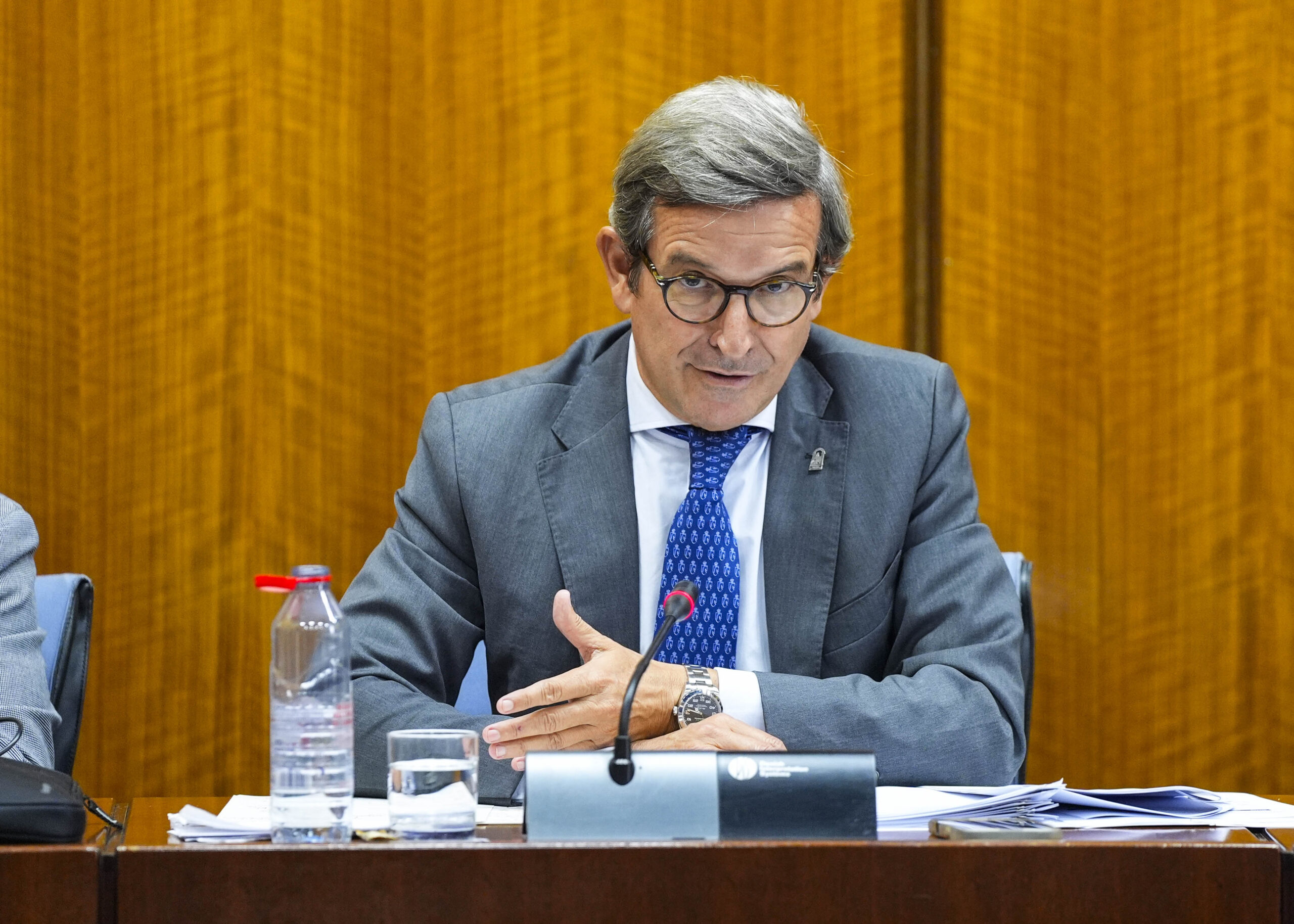The Andalusian Regional Government will present objections to the 2025-2030 electricity planning document so that the electrical infrastructure required for the development of the northern part of the province of Córdoba, specifically the Guadiato Valley and Los Pedroches, is included in the investment plan projected by Red Eléctrica de España before 2030, since the draft published by the central government does not include these projects for the next five years.
This was announced by the Minister of Industry, Energy and Mines, Jorge Paradela, in a parliamentary committee, where he specified that the Regional Government has already communicated to the Government of Spain the “viability and relevance” of these investments so that they can be included in the final planning and not discriminate against Andalusia again, depriving the region of infrastructure that “is essential for the development of the province of Córdoba and which also enjoys unanimous social support to meet a historic demand.”
Paradela considered the non-inclusion of the northern part of the province of Córdoba in the published proposal to be a “blow” for Andalusia, and added that it “makes no sense” that the planning recognizes the need to strengthen the electricity grid network between Badajoz and Córdoba to reinforce supply in Los Pedroches and the Guadiato, but relegates its implementation beyond 2030. “If its need is recognized, we don’t understand why it is postponed to the next planning cycle.”
Not surprisingly, the minister pointed out, the northern provinces of Córdoba and Jaén have “historical shortcomings” in the provision of electrical infrastructure, without which the implementation of industrial projects and, therefore, the opportunities for socioeconomic development in these areas are complicated.
Therefore, the Minister of Industry, Energy, and Mines emphasized that the Andalusian Regional Government cannot accept the exclusion of investments that are “priority” for the province of Córdoba and that would limit development opportunities. Therefore, they will submit their objections within the established period, which will run until December 16.
However, these are not the only projects not included in the planning that Andalusia has requested. Although the Regional Ministry is currently analyzing the document in detail, the Minister did reveal that other infrastructure projects that the Andalusian Government had requested in the provinces of Seville, Cádiz, and Granada have not been included.
Paradela also emphasized that Andalusia’s commitment to the deployment of clean energy, which was the key criterion valued by the central government in its current planning, “now needs to be reciprocated by the Government of Spain,” demanding that it “support the growth opportunities of our region with the investments in electrical infrastructure that the community is entitled to by right.”
“Despite our renewable potential, with 16,100 MW of installed renewable energy, we are starting from a clear disadvantage, with our electricity grid density 40% below the average for the Iberian Peninsula, with 742 kilometers of grid per million inhabitants compared to an average of 1,242 kilometers,” he explained.
Jorge Paradela criticized the fact that the 2025-2030 electricity planning document was published on October 8, “more than a year and a half after the autonomous communities presented their investment proposals.” This means that the “supposed advance” of investments in the electricity transmission networks that the central government argued for in order to bring forward the current planning (2021-2026) has been diluted.
In this regard, he emphasized that in addition to the €544 million investment that the Andalusian Regional Government had requested in its 2024 proposal, another €282 million must be added to the current 2021-2026 planning period.
“Having an adequate electricity transmission network in Andalusia is absolutely essential to respond to new industrial investments, with special attention to large projects associated with the energy transition, to ensure the deployment of clean energy, to support the distribution network to improve the security and quality of the electricity supply and increase access and connection capacity, both for demand and electricity generation, and to improve Andalusia’s connection to the rest of Spain, through the development of 400 kilovolt (kV) lines, which will provide greater capacity to the Andalusian system,” he added.
The minister also referred to the saturation of distribution networks, whose capacity map was recently made public, highlighting the need for greater investment in these types of networks as well. He noted that, although industrial projects, urban development projects, green hydrogen projects, storage projects, and data centers have reserved capacity for execution, there are a number of projects whose development is planned “in the medium and long term, and which require certainty regarding their energy viability.”






























